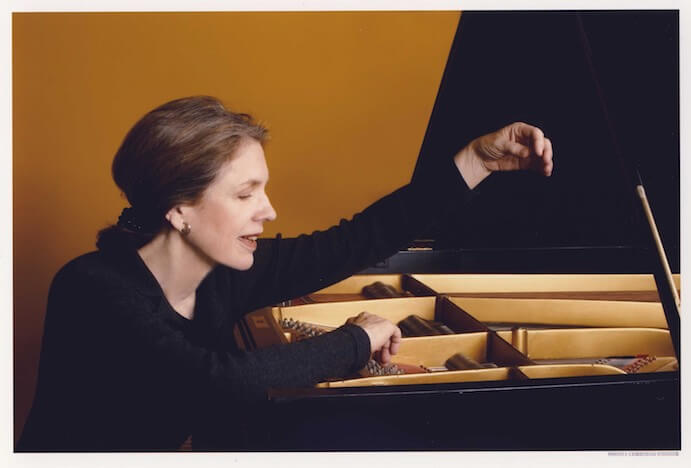On Monday, July 13, 2015 the National Opera Center hosted Margaret Brouwer’s Blue Streak Ensemble, which presented a greatly varied program of contemporary works by an array of international, living composers. From within the intimate setting of the Opera Center’s Marc A. Scorca Hall, an evening of chamber music as it should be experienced began to take shape; played in communion with tight-knit group of listeners, whether informed or simply curious, eager for the challenge of hearing something new and different. While the ensemble’s accomplished, young performers played beautifully, the diversity of the program made it difficult to distill a consistent objective or principle in their playing, illuminating most prominently a knack for carefully-practiced, strong execution but overshadowing any sense of unity as an ensemble with a cohesive agenda.
Violinist Kimia Ghaderi and pianist Erika Dohi opened the program with an approachable, pleasant work by young composer Clint Needham, which came across as distinctly American in character through a somewhat homogenous aesthetic and tonality. Two short arias from American master John Harbison’s iconic opera The Great Gatsby followed, sung beautifully and expressively by mezzo-soprano Sarah Beaty accompanied by Dohi. Harbison’s musical language also communicated a sort of distinct Americanness with subtle shades of chromaticism and color, which were in this case emanations of established American forms such as ragtime and jazz employed to tell his story. The ease and sophistication with which Harbison uses these tools is clearly the stuff that has enabled him to build his pedestal as a great American composer.
Comparatively, the most peculiar choice in repertoire of the evening easily doubled as the highlight of the entire program. Sound of Hand, by Chinese-American composer Huang Ruo, demonstrated an incredibly progressive and thought-provoking sense of drama, while relying solely on animated, silent gestures and a small array of sounds produced solely by the hands. In her wonderful solo performance of Ruo’s work, percussionist Haruka Fujii shone with unique brilliance, separating herself from the rest of the ensemble as a performer with a well established individuality transcendent of the notes on the page. Clearly informed by the personal experience Ruo’s work imbued in her, Fujii performed with a sharp focus and dedication to communicating this experience to the audience.

Margaret Brouwer
Following a brief intermission, the evening continued in its progression of contrasting works including a rather kinetic and enjoyable piece by Chinese composer Chen Yi entitled From Old Peking Folklore performed by Ghaderi, Dohi, and a pre-recorded collage of spoken word by American composer Andrew Rindfleisch made up of fragments of poetry from Christine Hume’s Shot. Unfortunately, playback was confined to the house right monitor. With no mention of technical difficulties it was impossible to know whether or not this was erroneous, and any material from Rindfleisch’s interesting work intended to be heard from the left stereo channel was lost.
The program culminated in a performance of Margaret Brouwer‘s Declaration, a song cycle generally dedicated to young people who have been affected by war and acts of terrorism while attempting to “go about their lives.” Drawing on various texts inspired by war and including one directly inspired by the events of September 11, 2001, Brouwer’s work seemed to represent a sort of condensation of the miscellaneous nature of the entire program, and (according to her program notes) drew from various methods and styles (or historic “-isms”) inherited from the 20th century and remaining distinctly separate. Again, Ghaderi, Dohi, and Beaty performed beautifully, Beaty shining most clearly in her dramatic portrayal of the texts.
Overall, this program possessed a type of pedagogy moderately well-served by the survey style programming. While a clear unity between the performers did not fully crystallize through the chosen repertoire, their individual ability to tell each unique story as the composers intended made for a thought-provoking evening.





















